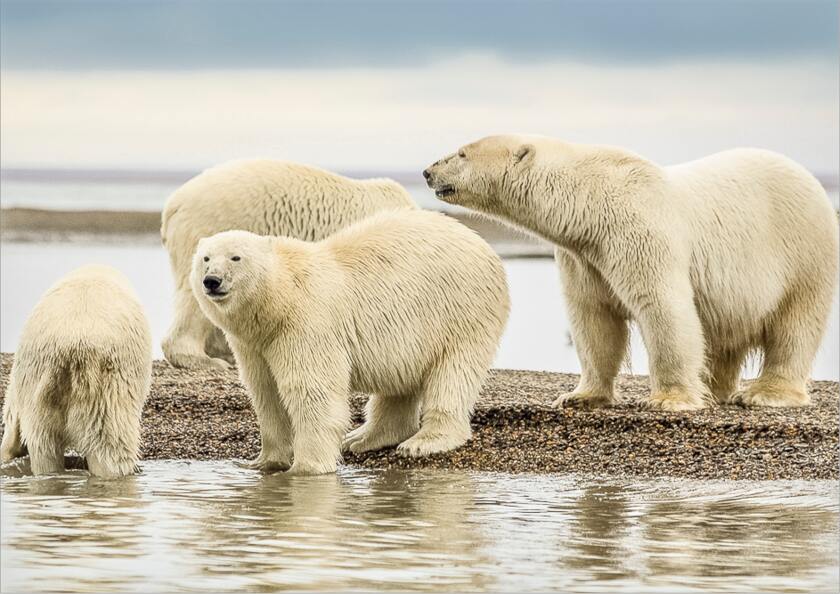
Ahhh, to be near the arctic: a wonderland coated in uninterrupted fields of snow, where the Northern lights paint the sky and whales roam the seas, where… a polar bear is rooting through your garbage bin?
According to the World Wildlife Fund (WWF), the retreat of sea ice has led polar bears to spend longer and longer periods of time on Arctic coasts, where curiosity, hunger, and their powerful noses lead them to human communities in search of treats.
A garbage-burrowing bear would be fine at a zoo - adorable, even - but for arctic natives in Canada, Alaska, Greenland, and Russia, polar bear encounters are creating an ever-growing problem. Many such encounters lead to physical harm and property damage for people and death for the bears.
In a perfect world, both ursine and hominine arctic residents would learn to shake hands, get along, and agree not to release greenhouse gases or root through one another’s garbage bins. But this is not a perfect world, and neither party is likely to uphold their end of the deal any time soon. Bears demonstrate notoriously poor regard for human preferences.
“We have to find ways to avoid conflicts between people and animals,” said Mikhail Stishov, Arctic biodiversity projects coordinator for the WWF.
WWF turned to a BYU capstone team for a potential solution, challenging a group of ECEN seniors to create a radar-based polar detection system to limit human and polar bear interactions. The team, including ECE students Jared Marchant, Gabe Saunders, Levi Fleming, and Parker Owen and ME students Kyle Pulsipher and Mark Hayden, delivered.
They created a radar detection system and corresponding app that allows users to view the location of polar bears in their region. People using the app can see when a polar bear is nearby and prepare accordingly, limiting interactions between humans and bears and ensuring safety for both.
Although the process challenged the team when they had to redesign, rebuild, and redress problems they discovered in their first prototype, Saunders said the project was much more exciting than he would have expected. “People always mentioned how hard [Capstone] is, but never how much fun it is,” he said.
He said his favorite part was designing and building the product, along with the enthusiasm of finally handing it back to WWF. He said he learned how to work with a team and sponsor and design to a market’s needs, and he gained skills that will benefit him in the future.
“Along with all the leadership skills that were acquired, knowledge of product development using close interaction with the market will definitely carry over to my future career,” he said.
It was a win-win-win: for the capstone students, for arctic residents, and for polar bears who just want to sniff out a little human garbage in peace.